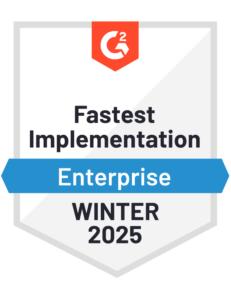Building the Business Case for Change: Accelerating Financial Automation
Blog post
Share
Using manual processes reliant on spreadsheets poses many opportunities for risk, not only through the lack of visibility but also through the risk of human error. According to a report by Forrester, C-level executives are making decisions based on data containing errors that they assume to be accurate.
Financial Automation Increases Visibility, Improves Confidence, and Allows for Higher-Value Activities
When asked about the level of visibility their organization has into their financial close process, only 16% of respondents report having complete visibility across their financial close process through a holistic solution that updates the status of tasks, etc. Almost 80% say they have limited or some visibility — but it relies on manual steps, and a significant lift from the team involved to provide updates, and 5% are in real turmoil with no visibility across the financial close process (Figure 9).

A significant benefit of financial automation is the ability to proactively provide real-time visibility into valuable data analytics for the organization. Without visibility enabled through standardized and documented processes, organizations risk losing valuable knowledge and information with talent churn. With only 16% of respondents reporting best-in-class visibility, there is significant work to be done, and the way to start is by leaning into technology and taking the processes out of the people and empowering the people with solutions that are standardized, automated, and intelligent.
Managing Data vs. Providing Insight
It is easy for finance professionals to get caught up in spending most of their time on readiness and data issues. Unfortunately, many of the process issues (broken processes) fall to the Record to Report/financial close teams to deal with. Top performing companies have a relentless focus on process quality (simplification, standardization, automation) and are quick to respond to breakdowns in process.
When asked how much time is spent managing data in readiness for the period end vs. providing insight to the business, over 65% of respondents said they are burdened by just managing data (Figure 10).

Implementing a financial automation solution can lead to higher employee engagement rates among finance teams, as they can shift focus to the meaningful work of evaluating growth and investment opportunities and analyzing new business risks. It could also help fill the work gap, meaning that you can work more effectively with a reduced team.
With Trintech, we’re able to not only see what we’re doing, but also what bottlenecks are preventing items from moving forward. Overall, our end users can now spend more time analyzing the data instead of manually managing it.” – LKQ Corporation
Two-Thirds of Organizations Want to Reduce Their Days to Close
Beyond cycle time reduction, companies must focus on optimizing the close and consolidation process. Optimization is more encompassing and includes improving controls, building agility and scalability, reducing process variability, flattening the close curve, and driving skills-enhancing opportunities.
Robert Kugel, SVP & Research Director with Ventana Research, says “As finance and accounting departments digitize, they need affordable software to orchestrate and supervise how that work is performed.”
No matter how capable finance teams are, without integrated technology, it is difficult to close quickly, efficiently and without risk. By investing in a financial automation solution, organizations can make their financial close process more effective and empower their teams to work smarter, not harder.
Written by: Mikayla Jordan






